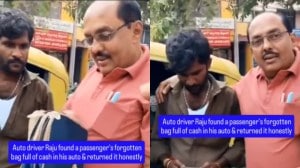As the INDIA alliance of Opposition parties prepares for the Lok Sabha elections, the BJP in the crucial state of Uttar Pradesh that has 80 parliamentary seats is focussing on the Assembly constituencies it lost in the state elections last year. The BJP and its allies lost 16 of the 80 Lok Sabha seats in Uttar Pradesh in the 2019 parliamentary elections but wrested two — Rampur and Azamgarh — from the Samajwadi Party (SP) last year in bypolls.

The 130 Assembly seats that the BJP and its allies lost in 2022 are scattered across 55 Lok Sabha constituencies. BJP candidates had secured the highest vote share in 40 of these Assembly segments in the 2019 Lok Sabha polls.
In UP, each Lok Sabha constituency comprises five Assembly segments. In the five parliamentary seats of Ambedkar Nagar, Azamgarh, Lalganj, Ghazipur and Kaushambi, the party lost all the Assembly segments in 2022. In 2019, the party had managed to win only Kaushambi while the SP bagged Azamgarh and the BSP took the other three.
The BJP lost four Assembly seats each from Basti, Ghosi, Ballia, Sambhal and Rae Bareli Lok Sabha constituencies while it lost three each in Pratapgarh, Barabanki, Nagina, Mainpuri, Moradabad, Rampur, Muzaffarnagar, Firozabad, Badaun, and Kanpur parliamentary seats.
How is the party mobilising?
State BJP general secretary (organisation) Dharampal Singh last week began meeting mandal unit presidents of the Assembly segments in question. Leaders from the three districts of Ayodhya, Ambedkar Nagar, and Barabanki were a part of the meeting held in Ayodhya.
In another meeting, Singh held discussions with leaders from 13 Assembly seats from Jaunpur, Machhlishahr, Sultanpur, Amethi, and Pratapgarh. In the Varanasi meeting, leaders from 16 Assembly constituencies of six more districts held discussions with the state leadership.
A senior leader who attended one of the meetings said local leaders had been asked to strengthen booth units as increasing vote share in these Assembly segments is key to winning the Lok Sabha seat. Party leaders in these segments have been directed to ensure that a candidate secures 51% of the votes in each booth.
Story continues below this ad
“To ensure 51% of votes are in favour of the BJP, leaders have been asked to approach members of the Opposition’s booth committees, which are known to influence voters, and convince them to join us,” he said.
What is the BJP’s strategy?
A BJP leader said that by January the party would identify influential members of different castes and urge them to support it while replacing inactive party workers with active ones.
The BJP is also placing focus on Dalit voters and wants to retain its hold on them. There are 17 Lok Sabha constituencies in the state reserved for Scheduled Castes (SC), of which 15 were bagged by the party and its allies. For the BJP-led NDA to increase its LS seats count from UP — it won 64 seats in 2019 — it cannot afford its tally of SC-reserved constituencies to go down.
At the recent meetings with district-level leaders of the party’s SC Morcha, leaders were asked to identify issues on which the Opposition was “misleading” Dalit voters. A BJP functionary alleged that the Opposition was misleading voters from SC communities by claiming that the party is changing the Constitution and ending reservations. The SC Morcha leaders have also been directed to gauge the mood of Dalit voters, especially in the backdrop of the BSP’s dwindling vote share. “They have been urged to find out which way — Congress, SP or BJP — the Dalit voters are likely to vote in case the BSP weakens further,” the leader said.
Story continues below this ad
Is the party mobilising like this only in UP?
It is part of the party’s larger mobilisation plans for the Lok Sabha polls. The BJP last year directed its Union ministers to visit more than 140 of the constituencies across India that it could not win in 2019, and interact with party workers and beneficiaries of government welfare schemes to boost the party’s prospects. Later, the party revised this to 160 constituencies.
The state unit’s latest drive is in line with this larger goal of the party of improving itself in the constituencies that slipped through its hands last time. In the 2019 polls, the BJP contested 436 seats, winning 303 of them. This time, since the victory in three Hindi heartland states earlier this month, the party has been talking about hitting the 400 mark. For that to happen, the haul from UP will be crucial. The BJP’s election-winning strategy is anchored in a template set by Union Home Minister Amit Shah. According to it, a strong organisation is paramount if the BJP has to repeat and build on its electoral success.

































